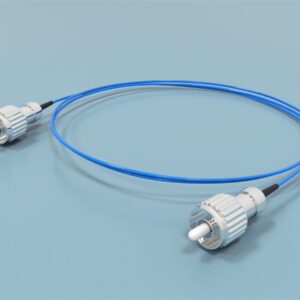$1,990.00
The latent learning apparatus is designed to study learning and memory functions in zebrafish. This setup includes a start box and a goal box linked by tunnels. Stimuli are provided in the goal box to attract the fish.
Fish movement in and out of the goal box is regulated by adjustable guillotine doors. The maze walls are made of acrylic, ensuring clear visual access to the goal box from any location within the maze.
Mazeengineers provides the Latent Learning Apparatus.

MazeEngineers empowers preclinical neuroscience research with meticulously designed, customizable behavioral apparatuses. From manual classic mazes to fully automated smart systems, we provide the tools scientists need to capture high-quality, reproducible data for studies on learning, memory, anxiety, and depression.



Features |
Height of apparatus: 10cm |
Length of start box: 15 cm |
Width of start box: 15cm |
Length of goal box: 15cm |
Width of goal box: 15cm |
Width of tunnels: 5cm |
Length of tunnels before intersection: 10cm |
Length of upward channel from the intersection to the goal box: 15 cm |
Length of start box tunnels: 35cm |
Width of start box tunnels: 5cm |
Length of path surrounding goal box: 25cm |
Width of path surrounding goal box: 5cm |

The latent learning apparatus is utilized to study learning and memory functions in zebrafish by analyzing their spatial exploration behavior. This setup allows fish to explore the maze based on their natural curiosity, without any reinforcement through rewards or punishments. It offers a versatile environment for a wide range of investigations, from understanding basic learning mechanisms to exploring the causes and treatments of learning deficits.
Jensen (2006) describes latent learning as a process where subjects learn the spatial layout of a complex maze simply by wandering through it without any reinforcer. When a reinforcer is later introduced, trained individuals use their acquired spatial knowledge to find the reinforcer more quickly than those who did not undergo unreinforced exploration.
The latent learning apparatus is also useful for assessing disruptions in learning abilities of zebrafish following acute and chronic drug exposure. Additionally, it can be used to study the impact of neurotransmitters on learning acquisition. This tool is invaluable for evaluating the biological and neurological mechanisms, as well as the molecular and cellular structures involved in learning. It is also employed in genetic studies of learning and memory traits in zebrafish.
The apparatus consists of a start box and a goal box connected by tunnels, with the goal box containing stimuli to attract the fish. The movement of fish between the start and goal boxes is regulated by modifiable guillotine doors, and the maze walls are made of acrylic to ensure clear visual access to the goal box from any location within the maze. Other apparatuses used for learning studies in zebrafish include the Zebrafish Associative Learning and Zebrafish Bifurcating T Maze setups.
The latent learning maze consists of a 15 x 15 cm start box and a 15 x 15 cm goal box, connected by a series of tunnels. The apparatus, constructed from clear acrylic, stands 10 cm high. A 5 cm wide straight tunnel extends 10 cm from the start box before branching into a 4-way intersection, offering upward, backward, right, and left paths, all leading to the goal box. The upward path extends 15 cm from the intersection to the goal box.
In addition to the straight path, the start box includes right and left tunnels, each measuring 5 cm wide and 35 cm long, leading to the goal box. Both the start and goal boxes are equipped with floor drains. The goal box has three entrances, each fitted with guillotine doors to regulate fish movement. Surrounding the goal box is a 25 cm long, 5 cm wide path connecting it to the right and left tunnels.
Ensure that the apparatus and all equipment are thoroughly cleaned before use. For the training and probe trial, use water that matches the quality, chemical composition, and temperature of that used during the habituation period. An external tracking and recording system, such as Noldus EthoVision XT, can be employed with the latent learning apparatus to record fish behavior accurately.
Fill the Latent Learning Maze with 10 cm of water. Confine the experimental group in the start box for 30 seconds to acclimate to the environment. Close the passage towards the straight path and either the left or the right tunnel leading to the goal box. Perform a 30-minute exploration session. Repeat sessions as required.
Fill the maze with water up to 10 cm height. Place a shoal of zebrafish as a reinforcer in the goal box. Place one fish at a time in the start box. After 30 seconds of acclimation, allow the fish to explore the maze without any restrictions of the paths. Conduct a 10 min trial for each fish.
Luchiari, Salajan, and Gerlai (2015) investigated the effects of alcohol on zebrafish performance by using the latent learning apparatus. The subjects were treated in six treatment groups using different alcohol concentration C0.00A0.00, C0.00A0.50, C0.00A1.00, C0.50A0.00, C0.50A0.50, C0.50A1.00, where ‘C’ represents alcohol percentage in chronic treatment and ‘A’ represents alcohol percentage in 1-hour acute treatment. The fish behavior towards zebrafish conspecifics in the goal box was observed in the probe trial. The results showed that the control group (C0.00A0.00) made maximum correct choices and represented a spatial bias in tunnel preference. C0.00A0.50 and C0.00A1.00 groups showed significant impairment of memory recall displayed as a wrong tunnel choice and less time spent in the correct tunnel. The chronic alcohol treatment groups C0.50A0.50 and C0.50A1.00 showed significant tolerance behavior towards the acute challenge. The withdrawal group C0.50A0.00 showed a marked disturbance in behavior represented as an incorrect tunnel choice, increased time in the wrong tunnel, less time in the goal box, increase time in the start box, less distance traveled and, elevated freezing time.
Gómez-Laplaza and Gerlai (2010) studied the learning and memory function of zebrafish in a latent learning task. The subjects were reared in five groups. Each group was trained for different tunnel preferences in the latent learning apparatus without any reinforcer present in the goal box. Each fish from all five groups was tested in a probe test for the display of latent learning acquired during the training phase. A group of five zebrafish conspecifics was placed in the goal box during probe trial to attract the subjects. It was observed that the subjects trained on right tunnel route preferred right tunnel and those trained on left tunnel preferred left tunnels in a probe trial. Subjects trained on both tunnels made random choices. Thus, it was concluded that the zebrafish successfully acquired latent learning in the absence of a reinforcer and showed learning manifestation in the probe trial.
Naderi, Jamwal, Ferrari, Niyogi, & Chivers (2016) investigated the role of dopamine receptors in the acquisition and consolidation of latent learning. The subjects were classified into three categories, 10 treatment groups, 2 trained control groups, and 1 untrained control group. The treatment groups were treated with dopaminergic agonists (Apomorphine, SKF-38393, and Quinpirole) and dopamine antagonists (SCH23390, and Eticlopride) using the solution immersion method. After a 16 days training period, the learning and memory performance of each subject was analyzed individually in the latent learning apparatus containing 6 zebrafish stimuli in the goal box. Results showed impaired cognitive function in subjects treated with dopamine agonists. It was concluded that D1 and D2 receptors mainly govern the acquisition and consolidation of memory in zebrafish. D1 receptor agonists showed no effect on learning when administered before training. On the contrary, D1 antagonists improved memory on post-training exposure. D2 receptor antagonists showed significantly enhanced learning performance in both pre and post training exposure.
Following parameters are analyzed by using Latent Learning Apparatus
The latent learning apparatus is a straightforward and effective tool that requires minimal handling. Its design enables high-throughput screenings, as it can operate with minimal monitoring simultaneously with other similar setups. The probe tests conducted using this apparatus are brief, making it suitable for analyzing larger sample populations. Experimentation with the apparatus doesn’t necessitate the presence of an experimenter, enhancing its scalability due to minimal intervention during trials.
Training zebrafish in a latent learning maze can require a significant amount of time and effort. It’s crucial to maintain a clean apparatus to avoid any potential interference from lingering olfactory cues on fish behavior. Ensure that the water temperature and quality in the apparatus align with the specifications of the habituation tank to provide a consistent environment for the fish. Mishandling of the subjects can lead to fear and stress, potentially disrupting their performance in the task.
There are no questions yet. Be the first to ask a question about this product.